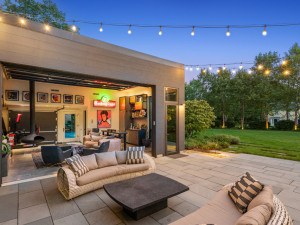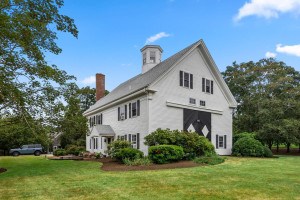Decoy Dynasty
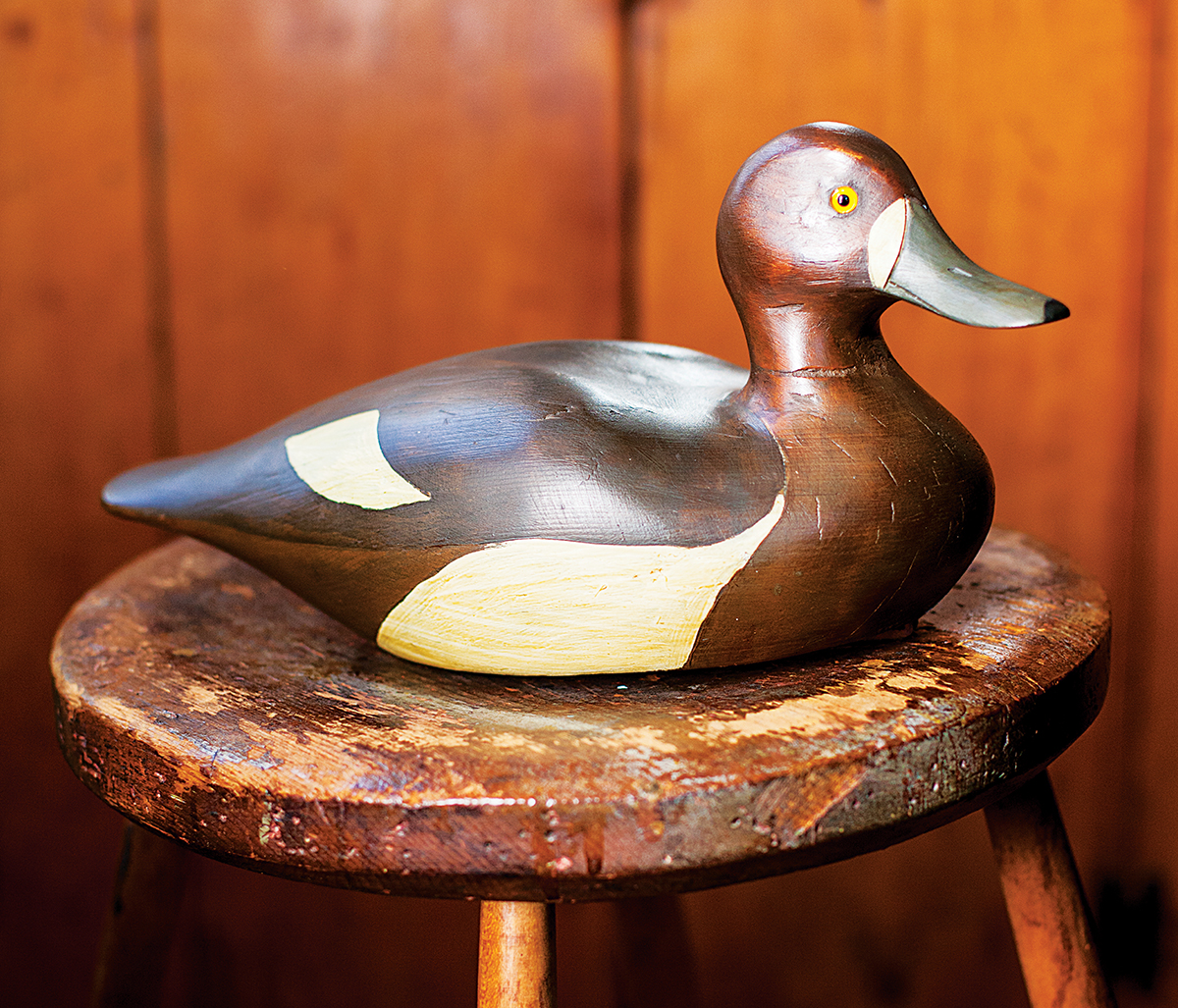
Decoy maker Bob Mosher carves birds like these from northern white cedar. (Photograph by Pat Piasecki)
Next to jazz and scrimshaw, decoy making is one of the few traditionally American art forms, and very much a part of the New England heritage. Exquisite handmade black ducks, geese, and bluebills—created in the early 20th century by famed Massachusetts carvers like Joseph Lincoln and Elmer Crowell—can now fetch more than $1 million each at auction.
It was the beauty of these locally crafted birds, as well as time spent hunting with his father as a young boy, that influenced Hingham Harbor Decoys’ Bob Mosher to begin carving his own ducks and shorebirds more than 60 years ago. The now-retired executive is mostly self-taught, although he’s taken a few classes over the years with other East Coast carvers. “We tend to learn from each other,” he says. Mosher is highly accomplished in his own right; in 2009, his work won first place in the Ward World Championship Wildfowl Carving Competition, the same year he was the “featured carver” at the Thornton W. Burgess Society Bird Carving Show in East Sandwich.
All of Mosher’s creations—from tiny chickadees to majestic full-size swans—start out as blocks of northern white cedar from Lee, Maine, near the Canadian border. In the basement workshop of his 1830s home, the artist uses a band saw to cut out a block, then “knocks it down” with a hatchet or big draw knife until it’s roughly the shape of the bird. He attaches heads (made of pine) with dowels, refining the assemblage for a few minutes with either a bow sander or a power sander (if the bird is quite large) until it’s ready for paint.
Mosher often works from photographs or from “an attitude or pose” he’s observed while bird watching. Leaning forward in his desk chair, he squeezes a brown blob of Ronan quick-drying paint onto a paper plate and dips a weathered paintbrush into a cup of water on the cluttered tabletop. His chestnut-colored American water spaniel, Sadie, slumps lazily in the corner. Fanning out the tattered brush, Mosher slowly dabs the chocolaty pigment onto the body of a small sanderling, maybe 5 inches in length. As he does this, the bird slowly comes to life in his hands. “This old blown-out brush is just perfect when you overlay the feathers. You can just run over the body, like this,” he says, slowly filling in the breast with delicate strokes. “If you tried to draw out every feather individually, you could spend the rest of your life and it still probably wouldn’t even look as good.” Still, he says, when it comes to making a decent bird, “you’re better off being a good painter than a good carver.”
Although Mosher tends to make whatever he’s interested in at the moment, shorebirds like sanderlings and sandpipers are in great demand among “people who like the outdoors, from bird watchers to duck hunters,” he says.
On shelves, above doorways, and resting on tabletops are decoys of all kinds, some of his own that were gifts for his wife, Peggy, and others he’s collected at antiques shows and auctions. Peggy, he says, was “a very good pick,” and is, perhaps, his harshest critic. “She kids about the fact that when she married me, she thought all ducks were mallards,” but at this point, he says, “she’s a pro” at identifying the 20 or so species of waterfowl he so carefully prepares for sale at Hingham’s Artisans in the Square and the Historical Society gift shop.
When asked if he’ll ever retire his passion, Mosher shakes his head. “I’ll keep going right to the end. Unless arthritis takes my hands, I’ll keep going.”
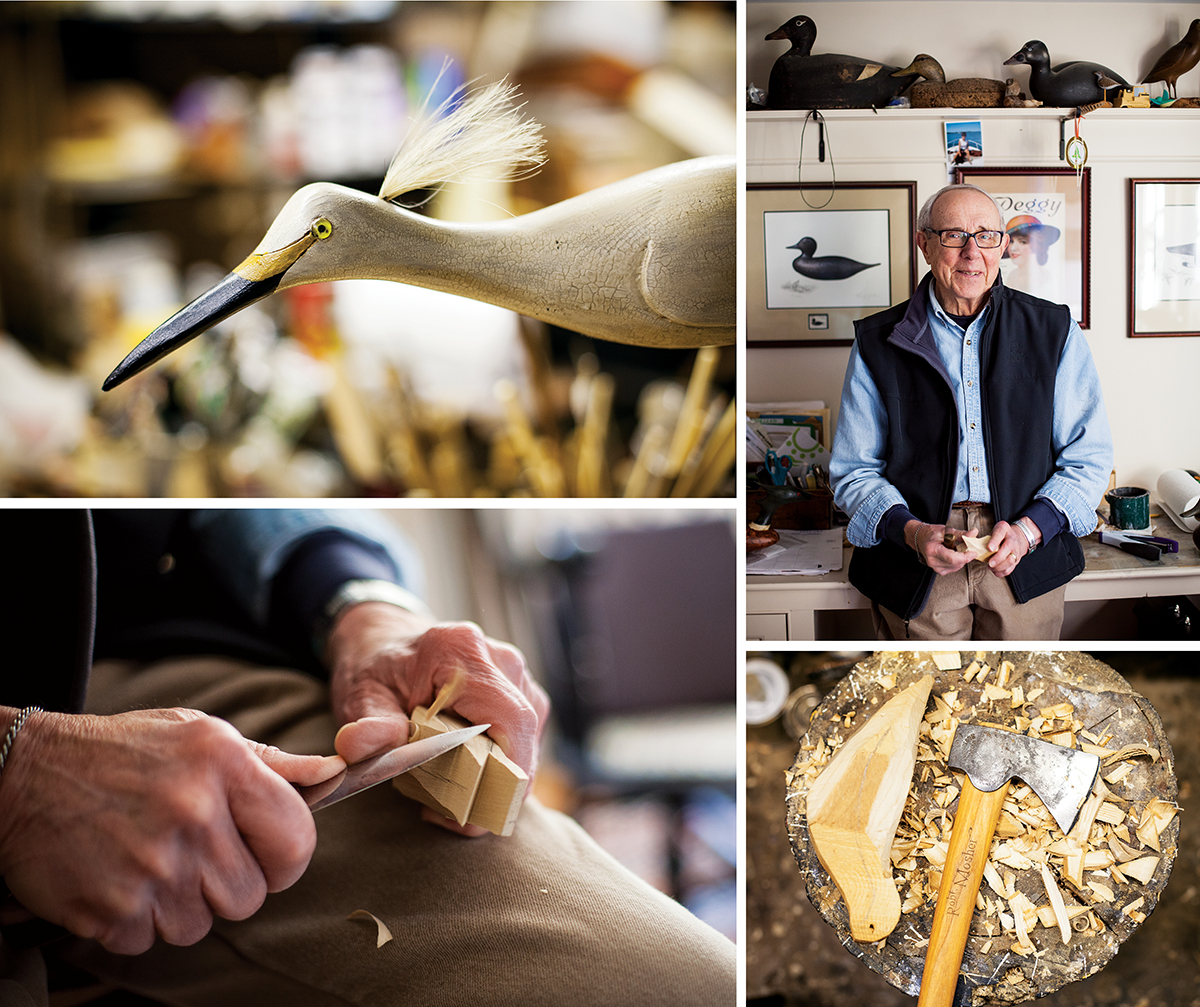
Photograph by Pat Piasecki
Clockwise from top left, a snowy egret with a horsehair-bristle crest; the artwork in his workspace pays tribute to his life’s loves: decoy making and his wife, Peggy; Mosher traded a large batch of cedar for this customized hatchet; Mosher carves the bird bodies by hand.
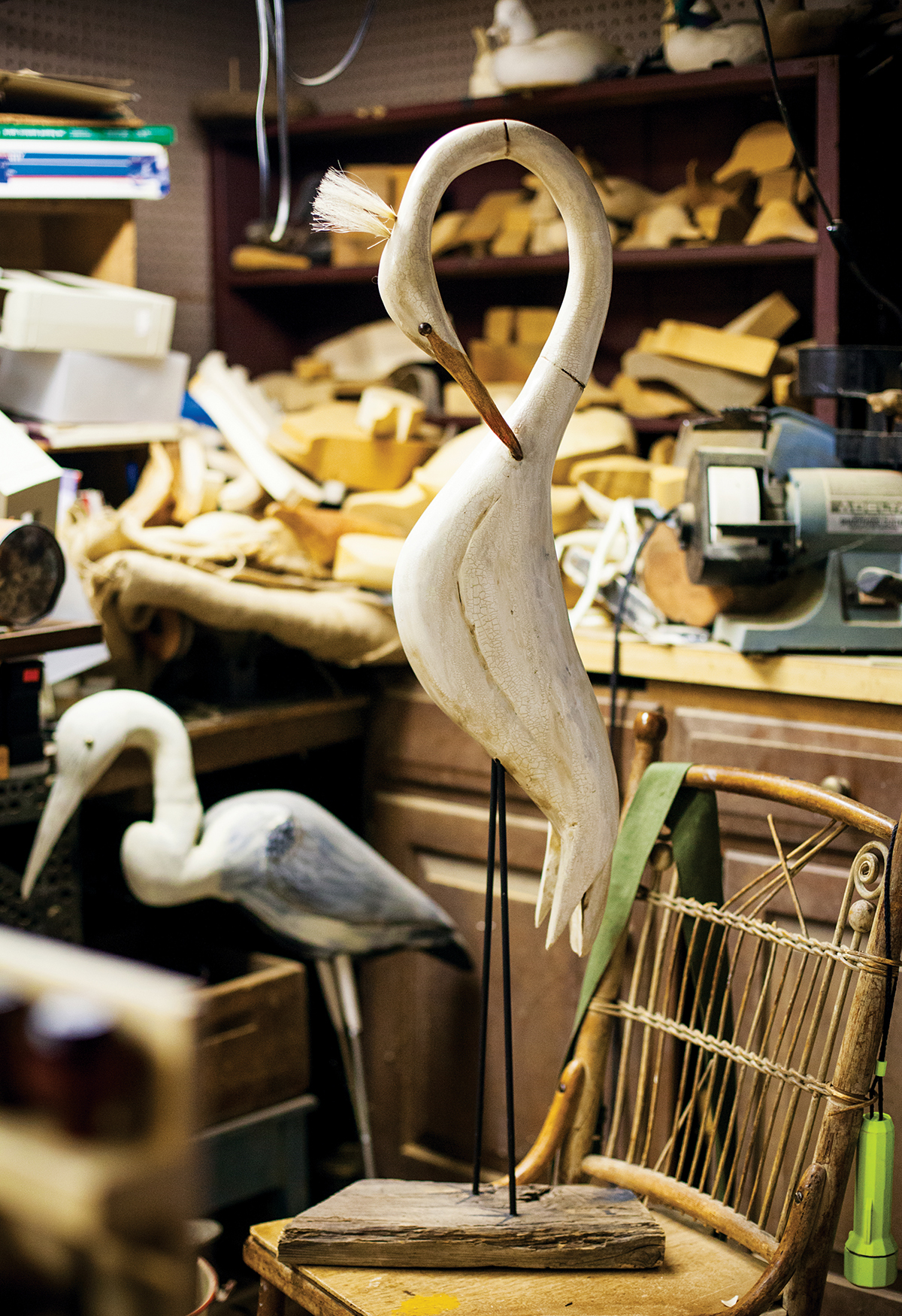
Photograph by Pat Piasecki
A great egret and a great blue heron in the workshop.

Photographs by Pat Piasecki
From left, Mosher uses templates to lay out each decoy on the cedar; the decoy maker says he loves his “magic knife,” a gift from the esteemed carver Mark McNair, because it fits perfectly in his hand.

Photographs by Pat Piasecki
From left, two of Mosher’s favorite pieces, an Eskimo curlew and a Cape Cod yellowlegs, sit on display in his living room; an antique-style Golden Plover shorebird.
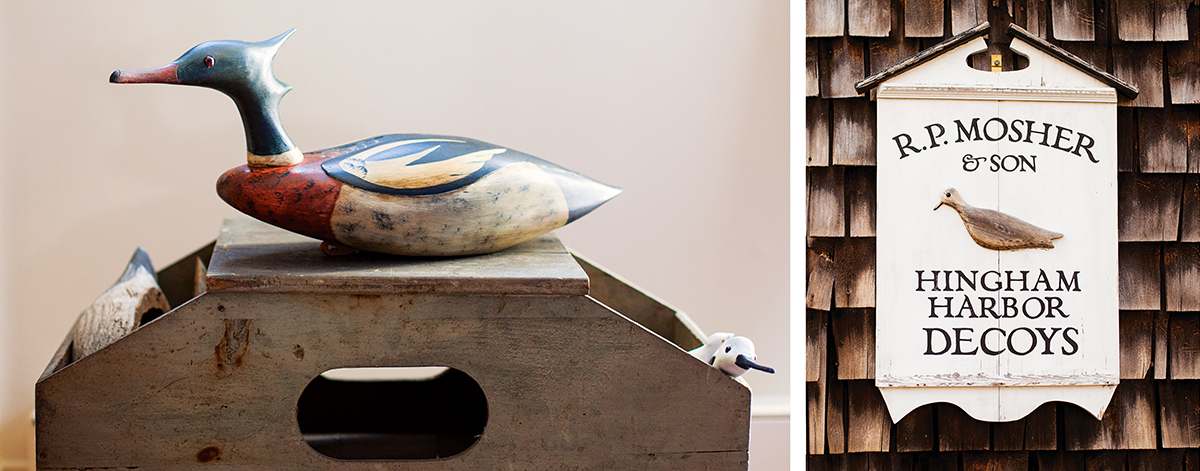
Photographs by Pat Piasecki
From top, Mosher’s drake red-breasted merganser is one of his more popular pieces; the Hingham Harbor Decoys sign stands in reverence of the famed carver Elmer Crowell, whose sign read A. E. Crowell & Son.

